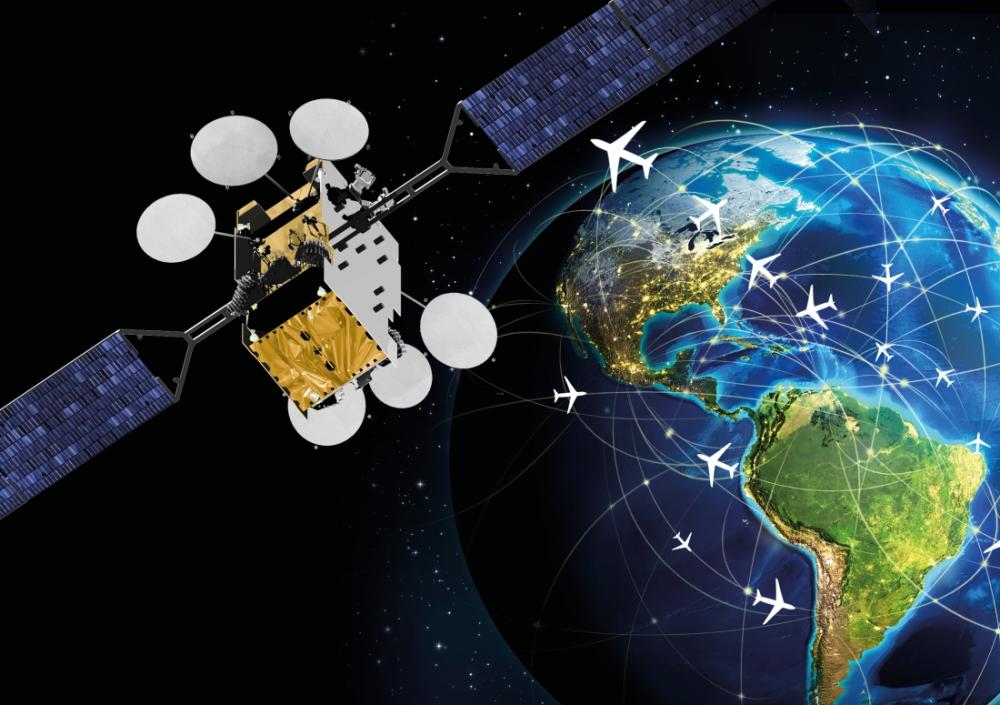
A rendering of Thales’ all-digital SES-17 satellite. Image courtesy of Thales
A key technology on board Thales’ SES-17 satellite could facilitate high-speed streaming on flights in the next few years.
Thales’ Spaceflex VHTS, a digital transparent processor, “allows us to digitalize and process more capacity than the previous generation by a times-100 scale factor,” said Jérôme Fraresso, satellite project manager at Thales Alenia Space.
A fully digital satellite, the SES-17 accounts for the substantial upgrade over older generations. It entirely dispenses with analog technology, allowing for far greater adaptability and efficiency. This presents mobility operators with an unprecedented ability to adjust to evolving markets.
SES-17 uses almost 200 spot beams of varying sizes to mix signal sources. It further dispenses with restraints for gateway locations, which can be now added to existing hub sites.
This unrivaled adaptability allows for increased connectivity during flights. With SES-17 expected to be operational by 2021, this real-time capability means that quality Wi-Fi connections on planes will become the norm, rather than a high-cost extra, according to Thales.